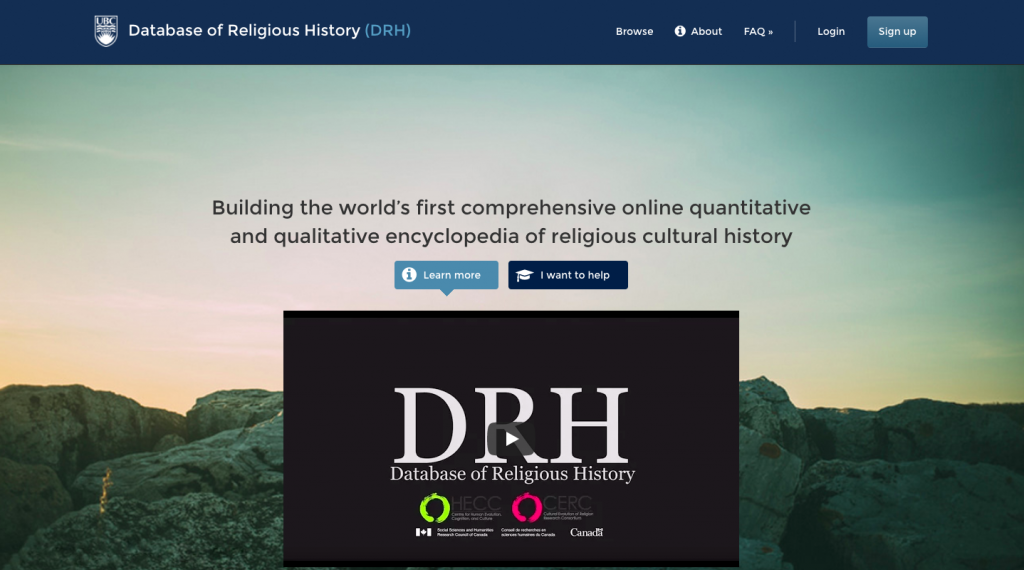
The following exchange between Prof. Mike Altman and Sarah Griswold, a student in our MA program, reflects on the recent meeting of the journal reading group, part of our Religion in Culture MA.
Mike Altman: Sarah, for our first journal reading group you chose the article “Durkheim with Data: The Databse of Religious History” from a recent issue of JAAR. What’s the gist of the article and why did you think we should read it in our group of MA students and faculty?
Sarah Griswold: The article is basically an introduction (and justification) for the Database of Religious History. This database is meant to serve two purposes: to be a database for “religious groups” in the premodern world and to provide evidence for a theory of religious evolution. In effect, the database tries to play both fields of holding and providing both quantitative and qualitative data. The article mostly reads as an attempt to draw more scholars in in order to add data to the database.
As far as why I thought we should read it, there were a few reasons. First, as someone with a background in both the humanities and math, I think understanding how and why qualitative data is quantified is really important to understanding and critiquing the purpose and use of databases like this one. Second, as the humanities (and particularly religious studies) moves more and more towards digital projects, we need to be aware of what’s out there so we can emulate what is done well and improve on what is lacking. Finally, the article also offers us insight into the theoretical workings of the project itself. Although titled “Durkheim with Data,” it seemed as though the creators of this project have not critically considered or defined the very categories they have opted to work within, making the move from qualitative to quantitative data suspect. That, I think, can be quite telling of the ultimate success or failure of a project of this size.
MA: As a student in this new MA program that has an emphasis on digital and public humanities what can you learn from this article and what can we as a program learn?
SG: Personally, this article reinforced the importance of thinking through the categories you use when quantifying data. It can be easy to point to something you “know” is religion and label it as such without thinking about why you’ve decided on that label in the first place. It’s also interesting to think about the collaboration across disciplines that these projects require. It would be impossible for one or two scholars to gain all the skills needed to make these things even work. It turns out that group projects exist in real life too and not just in school.
As a program, I think the biggest take away is to pay attention to the developments of these projects. Because the DRH has a capacity to refine their methods, I don’t think they should be entirely dismissed as uncritical. There are positive and negative take aways from critically examining any digital project. Learning more about digital projects and examining their goals and functions can and will tell us a lot about how to move forward in our own individual and collaborative projects.